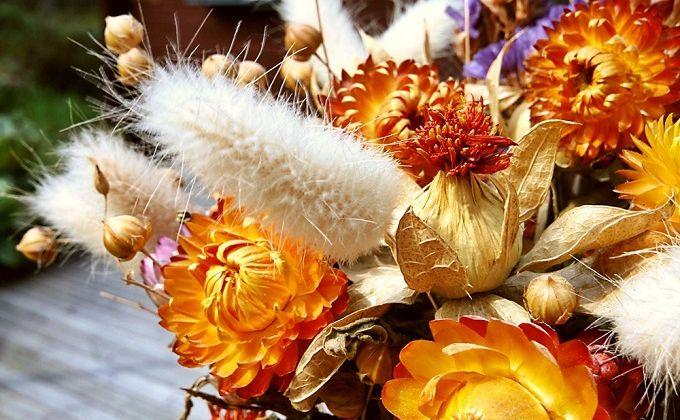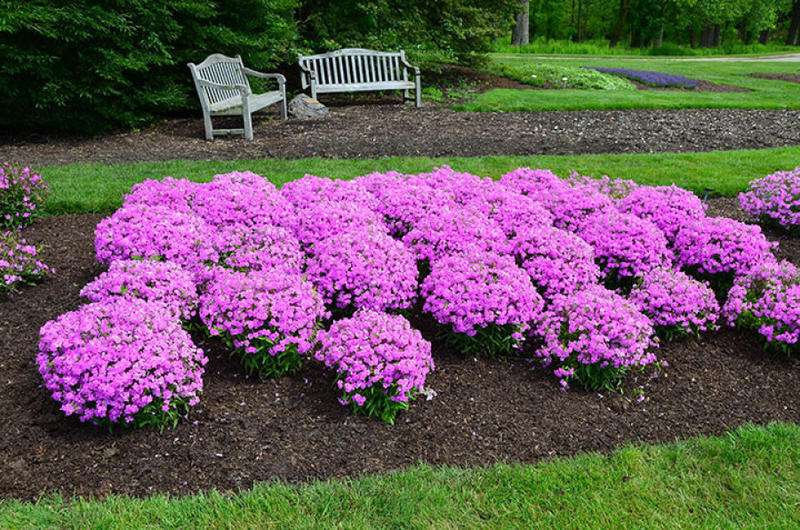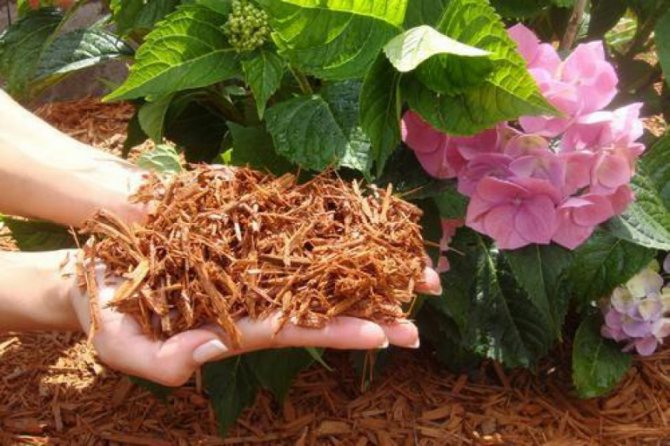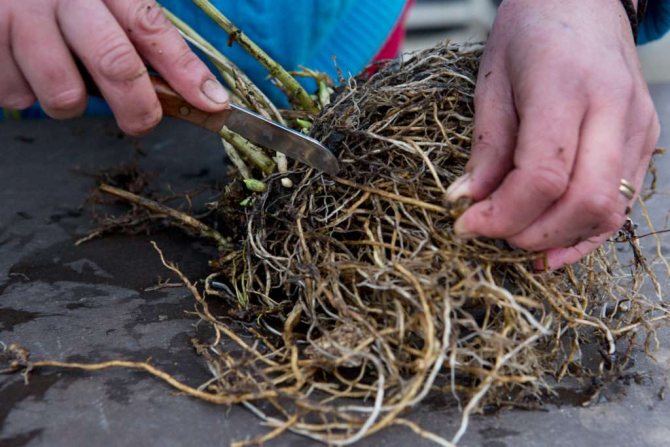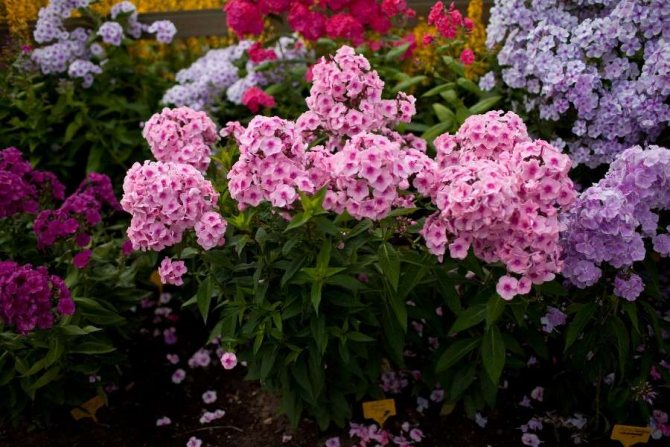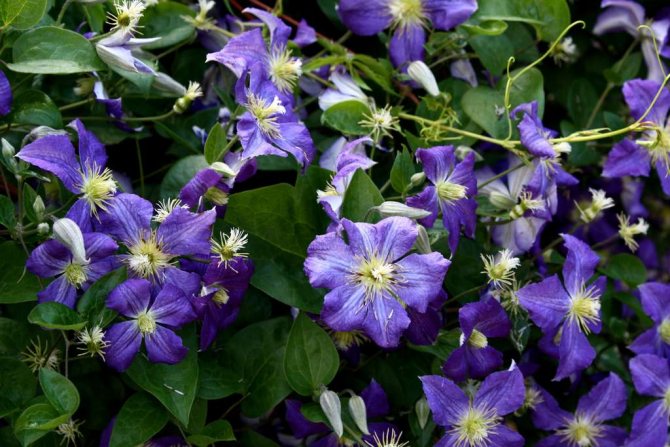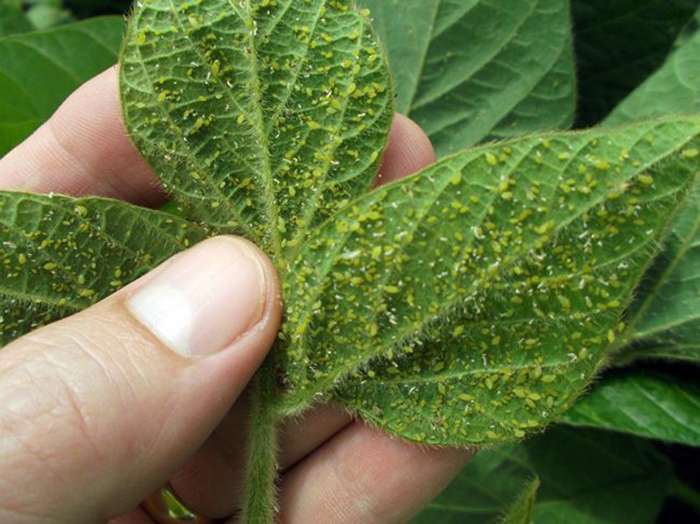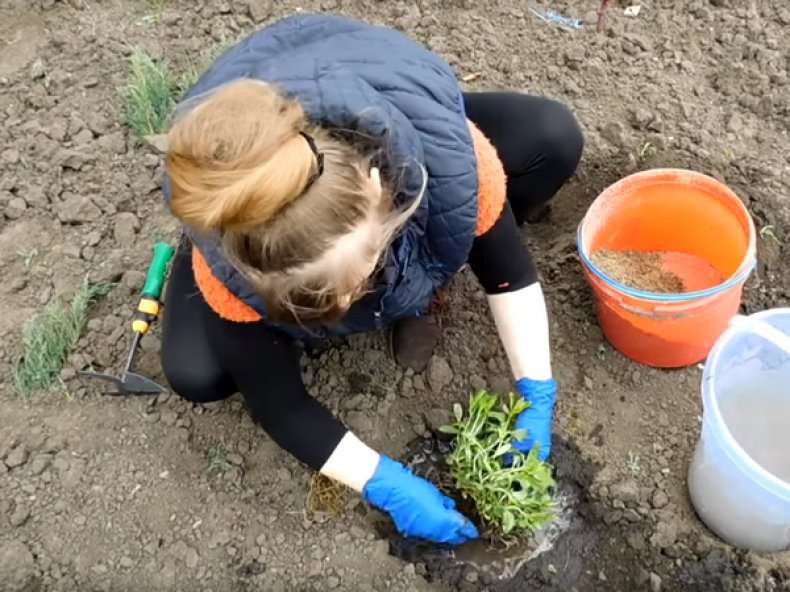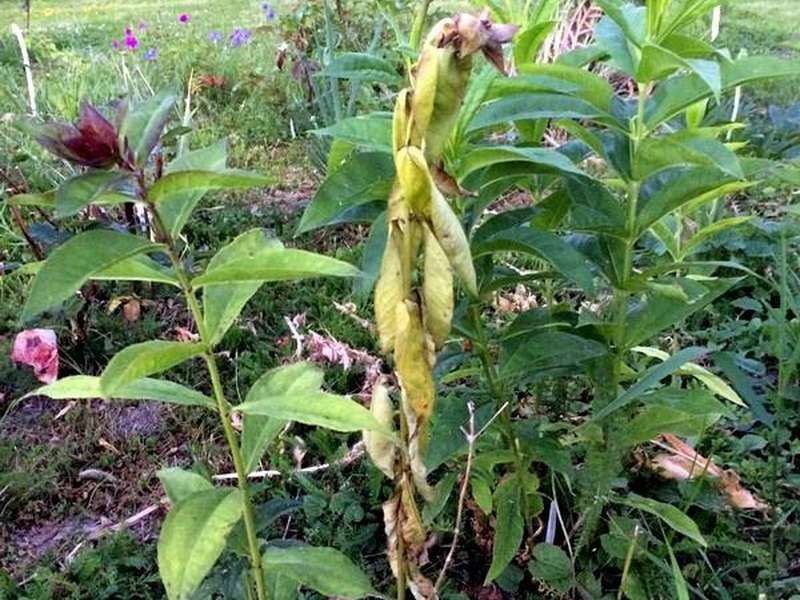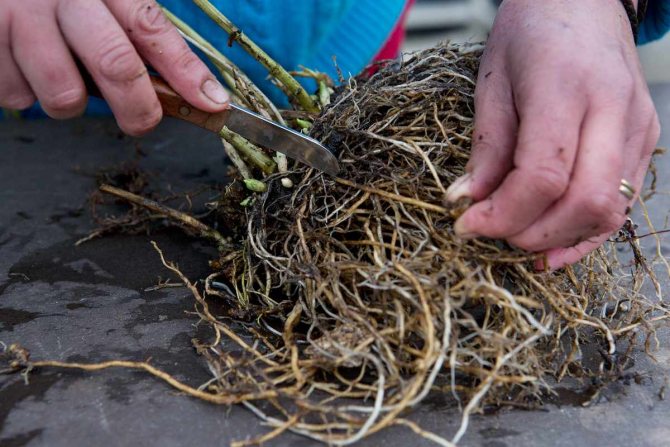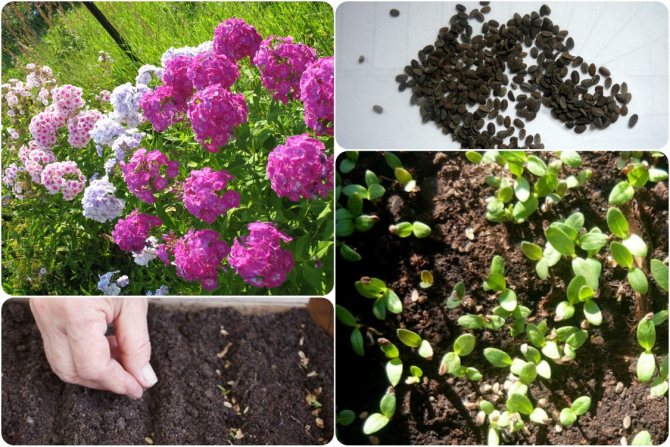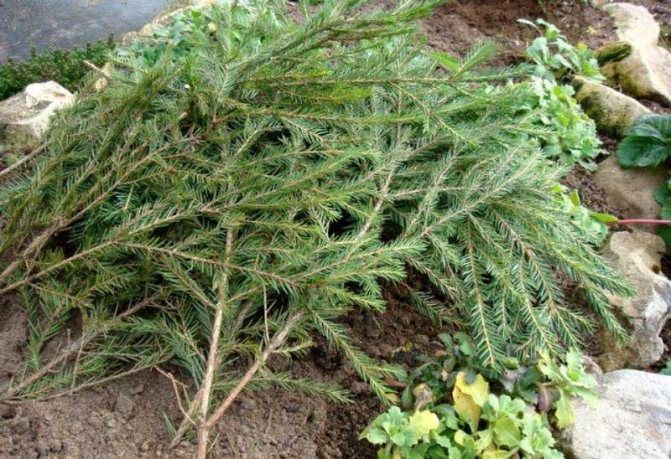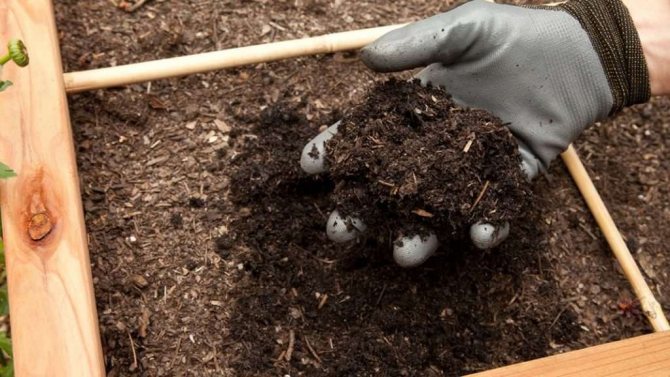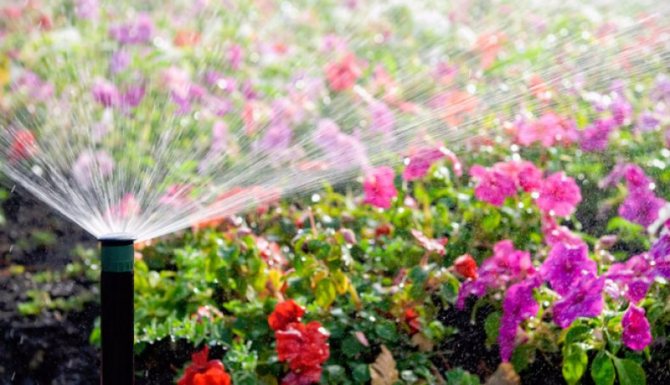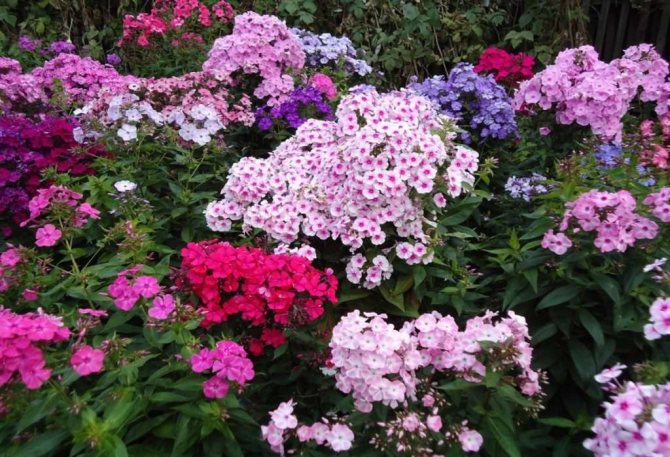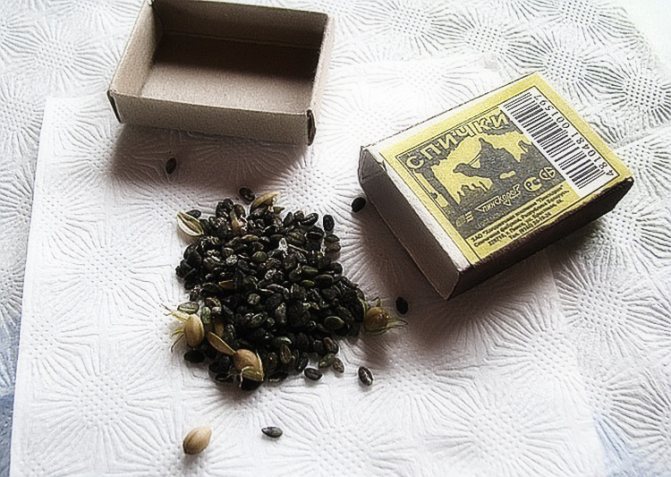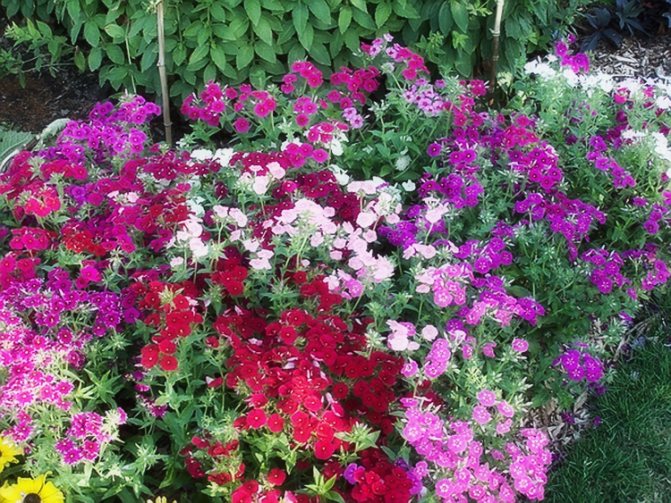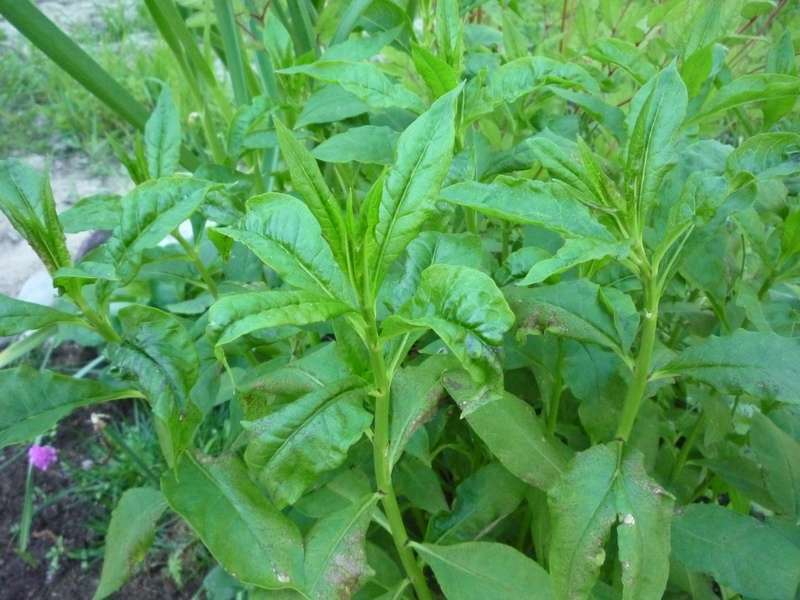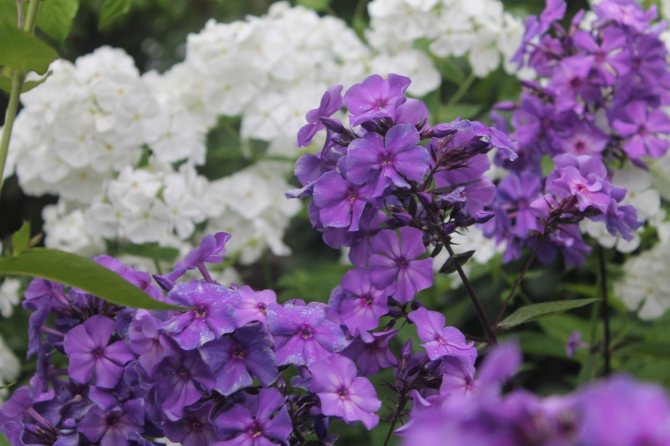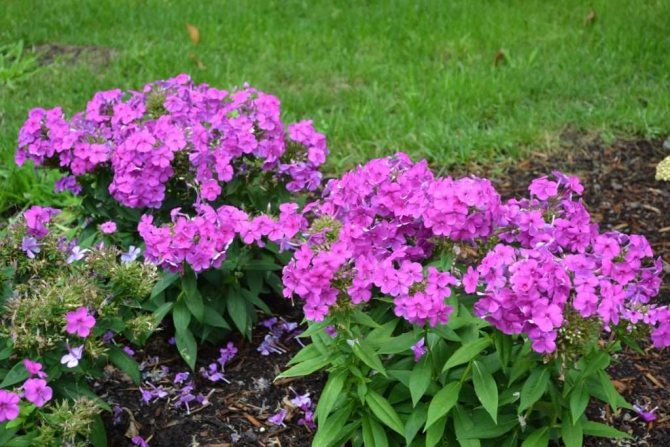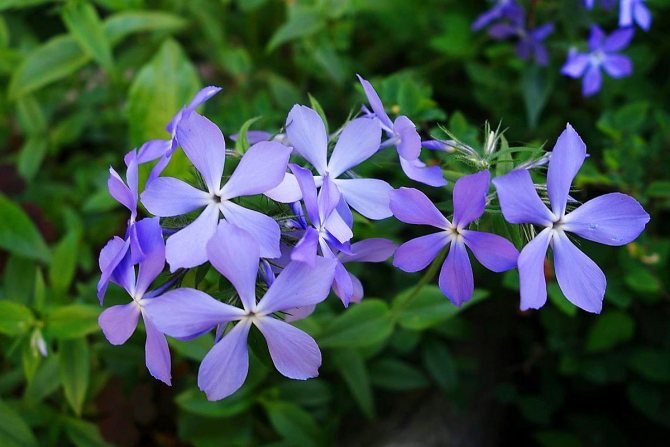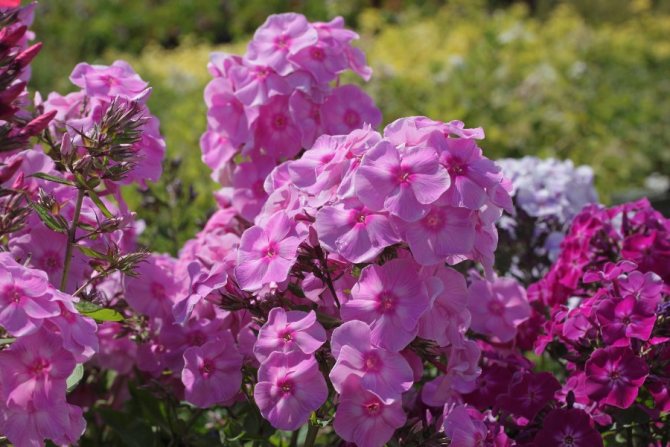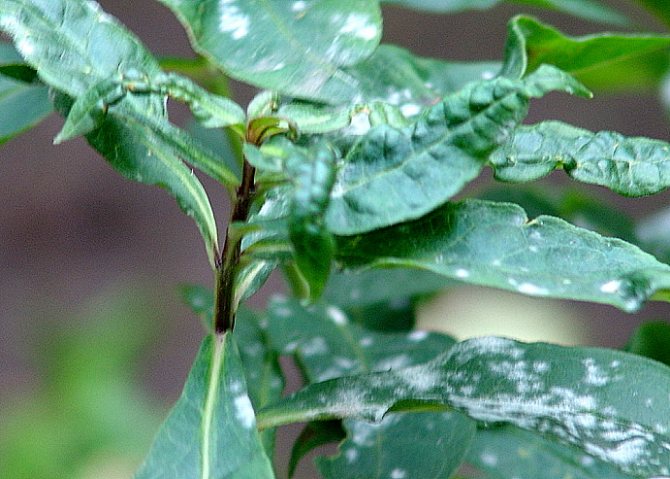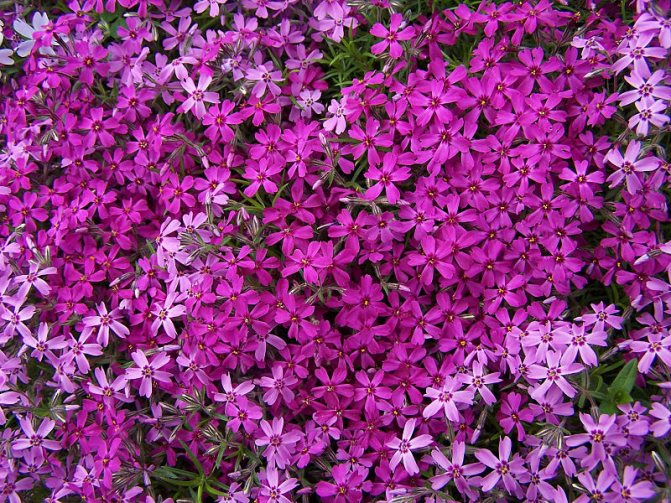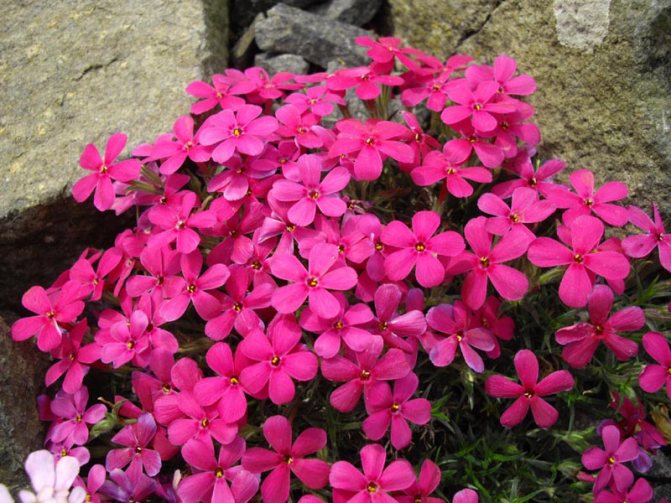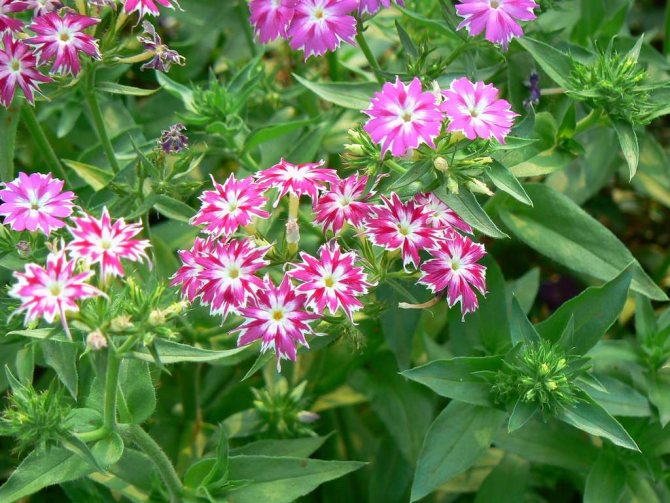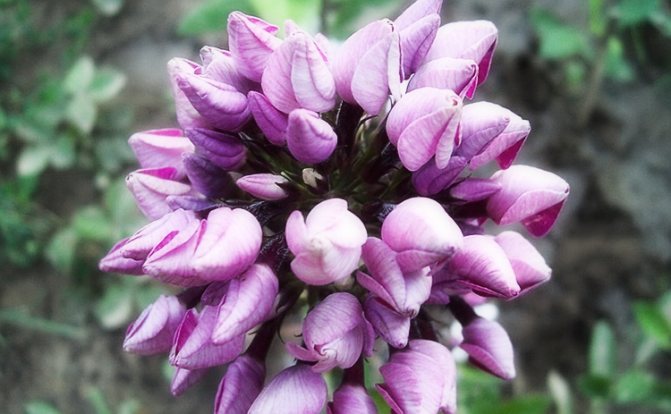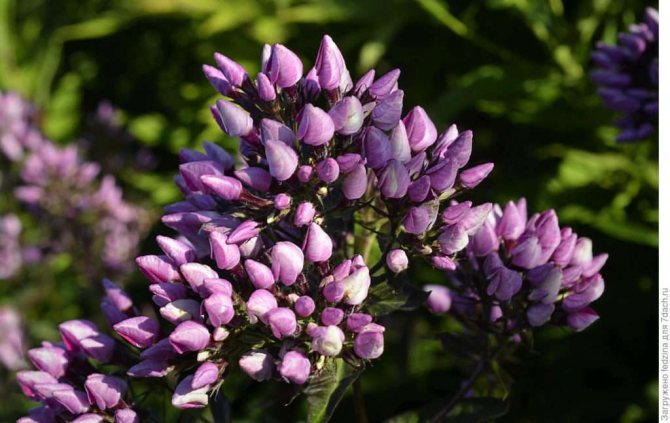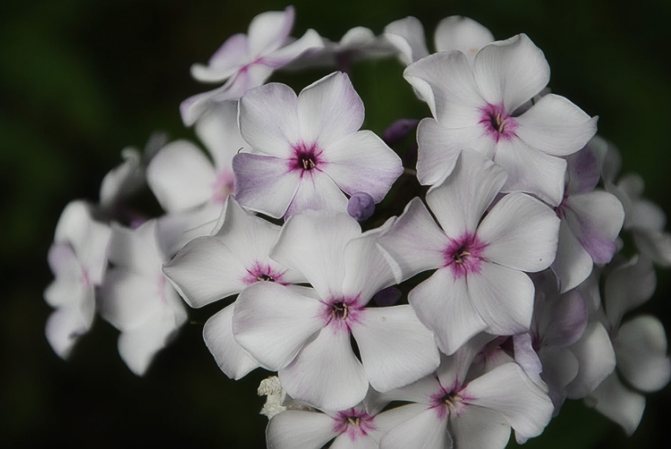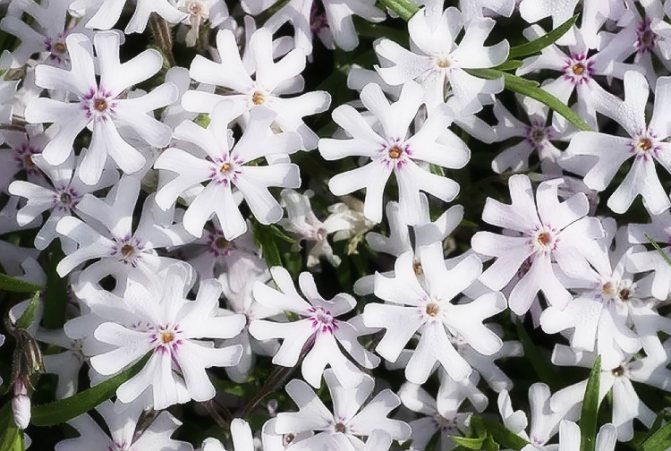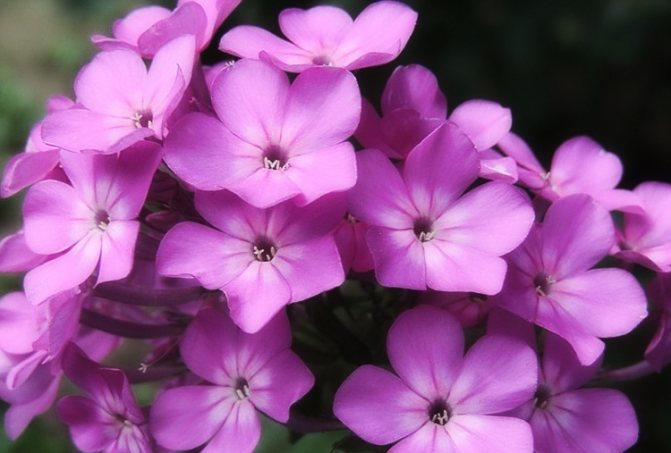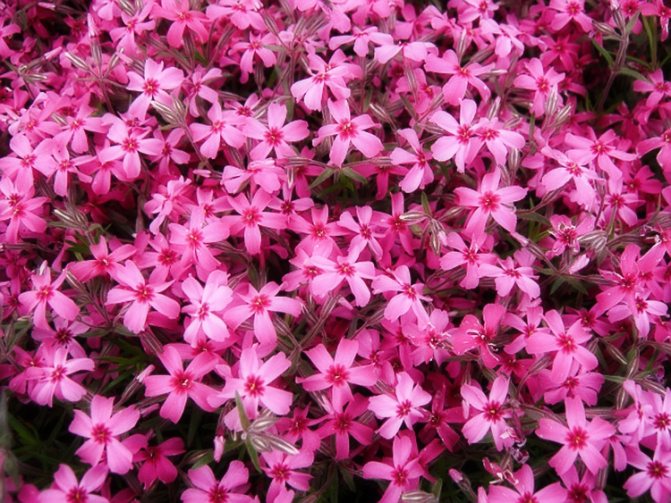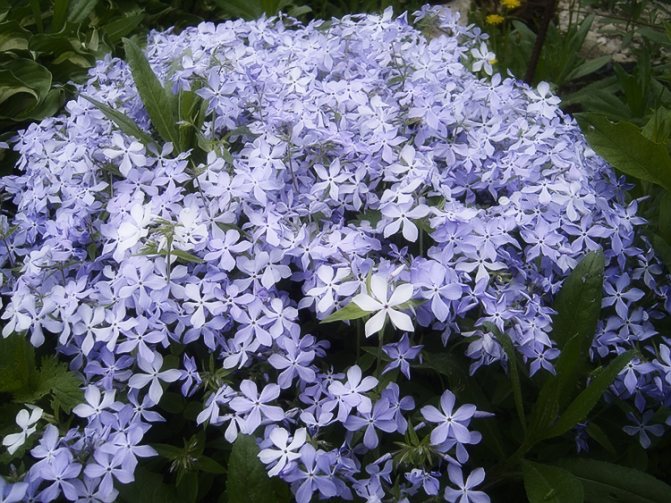Delicate phloxes can decorate any flower bed. Having familiarized himself with the features of soil preparation, the rules for choosing a landing site, the basics of care, feeding, reproduction and disease control, the gardener will be able to preserve the health and beauty of this amazing plant.
When we talk about phlox, we often imagine old, neglected gardens, where huge bushes grow and bloom on their own. Meanwhile, "grandmother's phloxes" fit quite organically into the modern garden space, forming especially charming, nostalgic corners of it. The main thing is your imagination and competent approach!
Phlox is one of the brightest and most fragrant perennials in our garden. Blooming phloxes are smart, unpretentious and cheerful. For this we love them! The most common and most "Russian" is considered to be phlox paniculata - Phlox paniculata. Although his origin is not Russian at all, but very American. Wild relatives of the garden phlox are found in Canada and the United States. But it took root and especially fell in love with it in Russia, where a great many of its forms and varieties were bred.
How to choose the right landing site?
It's not as easy as it sounds. Practice shows: if you plant phlox, according to general recommendations, in a dry, sunny place, then they will not grow at all the same as in old gardens. And they will be small in growth, and they will fade quickly. Yes! It's all about the excess of sunlight! Phloxes all strive to crawl under the bench from the sun! I never cease to wonder why this wonderful flower is advised to be planted in full sun, while this is a great plant for partial shade!
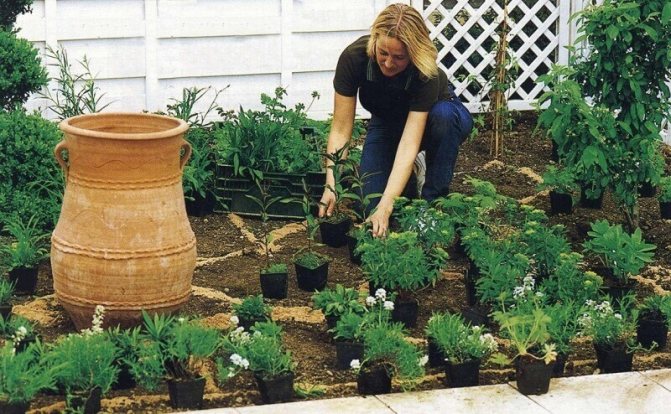
Even in rather shady places, which the sun pampers with its rays for no more than three hours a day, phlox will grow remarkably. And not just grow, but prosper! It is in partial shade that the most lush and beautiful bushes grow, which bloom profusely until late autumn.
The sun, on the other hand, nails phloxes to the ground, making them bloom and fade faster. Moreover, there are many varieties for which the sun is simply contraindicated. Their flowers quickly fade, turn pale and seem to be covered with a layer of dust.
But there are still so-called blue varieties, the color of which we can appreciate only in the evening! In the sun, they manage to lose their miraculous pigment in a day, and at dusk they finally turn blue - which they should be by nature!
The main recommendation when choosing a place: plant phlox bushes in partial shade, or arrange for them at least temporary shade during the hottest hours.
Brief characteristics
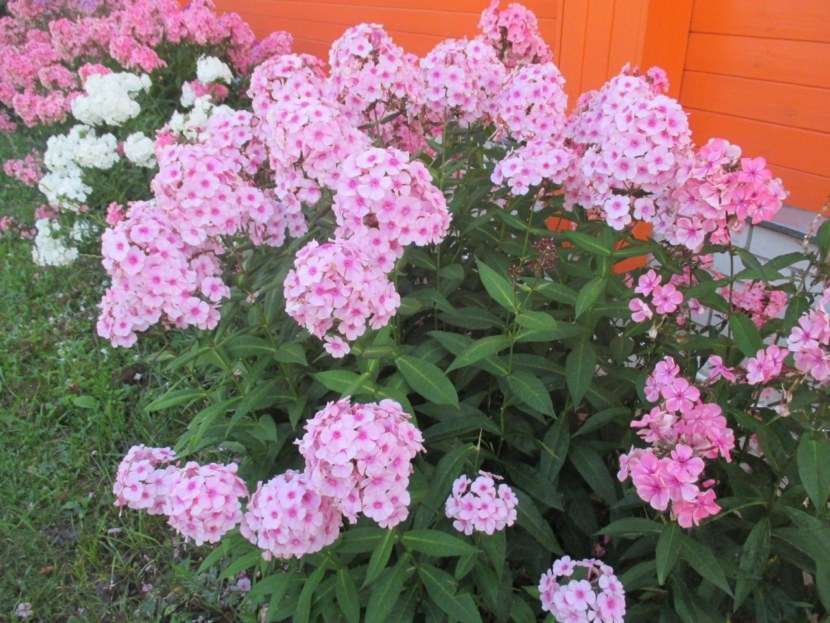

Phlox is a perennial, the most common and sought-after variety, it will grow and bloom from year to year. Perennial varieties are available in many beautiful colors, including exotic shades such as lavender, orange, various combinations of purple, pink, red, white and even silver. You can also find phlox varieties that delight the eye with bicolor buds or striped flower petals (Candy Twist).
And how many perennial phlox blooms? Plants bloom (depending on the species) from July to August. Newer cultivars can also bloom in September. Most varieties of phlox are hardy perennials intended for mid to northern latitudes.The plant in total can cover an area of 2 to 5 square meters, depending on the variety. Many flowers are quite fragrant and attract a large number of butterflies, bees and other insects.
How to prepare the soil?
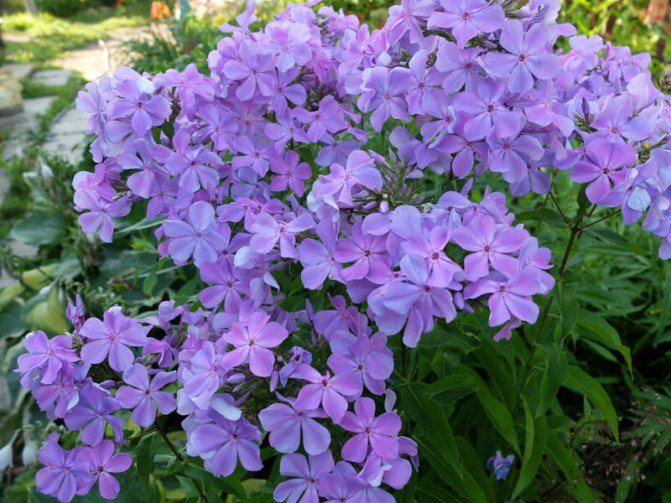

Phloxes are not particularly demanding on soils. They only dislike acidified areas, so such soils need to be limed before planting. Phlox also feel bad on dry sandy hills and vice versa, in swampy lowlands. All other soils are quite suitable for them. For example, a fertile sandy soil without any admixtures of clay, but with a good humus content and sufficiently moist, allows you to grow huge and luxuriantly flowering bushes! It is more difficult for phlox to grow on heavy loams. In such soils, we must add organic matter, sand, peat.
Tips from experienced florists
Growing perennial phloxes will be easy business, if you follow the advice of experienced florists:
- Dry stems must be removed;
- If you need to get a low and wide bush, pinch is done;
- When there are fewer flowers on the bush, phloxes must be divided and transplanted;
- If there are a lot of weeds, weeding is necessary.
If you take proper care of phlox, you can get a garden with beautifully blooming and healthy plants.
How to plant correctly?
The main part of the roots of phlox is shallow (15-20 cm). Therefore, it makes no sense to dig a deep hole and lay nutritious soil on the bottom. We dig a small planting hole where the roots will fit. When planting in spring or early summer, add vermicompost, compost or other available organic matter, as well as a couple of handfuls of wood ash. If we plant phlox in the second half of summer or early autumn, then nitrogen fertilizers, especially mineral fertilizers, do not need to be applied.
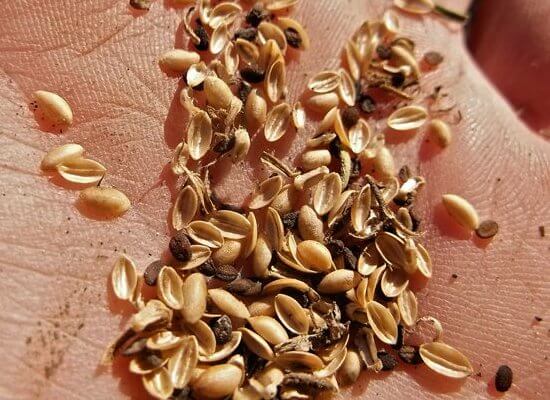

The distance between the bushes should be at least half a meter. But more is quite possible! Phlox bushes, if given free rein, grow up to one and a half meters wide! True, on heavy soils, phlox can eventually form a "receding hairline" in the center of the bush. On light soils, this is not observed. The bushes grow without care for 10-15 years and look gorgeous at the same time!
What problems do gardeners have with growing phlox
Most often, gardeners may experience the following problems when growing phlox:
- insufficient growth of the stem and flowers, lethargy. This is due to the arid climate, dry land and lack of moisture;
- the appearance of diseases phomosis, powdery mildew, spotting, which can completely destroy the flower. Fungicides will help in the fight against ailments;
- abundant growth of vegetative mass with little flowering. It happens because the extra shoots were not removed in the spring;
- poor germination of seeds or engraftment of cuttings, if they were taken from a mother bush infected with diseases or infested with pests;
- poor survival rate after transplantation. Perhaps the wrong place was chosen or the wrong time of the year was chosen.
Note! Since the flower is unpretentious, the right time for transplanting and the watering regime will completely eliminate these problems. If the gardener detects an infectious disease in time and starts treatment, the disease can be defeated.
What to feed?
We do the first feeding in the spring, even in the snow. With melt water, nitrogen and other nutrients will immediately go straight to the roots. But since the root system of phlox is shallow, fertilizer can be scattered under the bushes during the period when the first shoots appear. Spring feeding should be nitrogen or complex - with equal amounts of nitrogen, phosphorus and potassium.


We do the second similar complex feeding in early July, before flowering. And the third - in early September, after flowering. Wood ash or any phosphorus-potassium fertilizer is best suited for her.
Correct care
Landing is only 50% of success.The other half is proper follow-up care, which consists of the following aspects.


Top dressing and loosening of the soil
Immediately after immersing the plant in the soil, it must be well watered. The optimal water consumption is 15 liters per square meter of planted plants. Next, you need to monitor the soil moisture every day, maintain it with systematic small sprays. Mulching with peat, sawdust or coarse straw can be used to prevent the soil from drying out quickly.
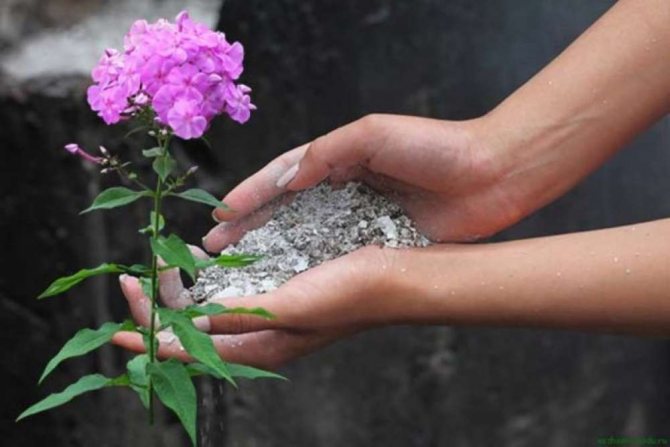

Loosening of the soil is carried out periodically to improve air permeability. Nitrate is used as fertilizer - only 20 grams per square meter. Potassium-phosphorus fertilizing contributes to the more rapid development of the plant, the strength of its root system. In May, it is recommended to use liquid mineral fertilizers. Dissolve in 10 liters of water:
- 0.5 liters of chicken manure;
- 20 grams of potash fertilizers;
- 20 grams of phosphate fertilizer.
The resulting solution is enough to water about two meters of vegetation. In late May - early June, a similar procedure is repeated, increasing the concentration of the second and third components to 30 grams.
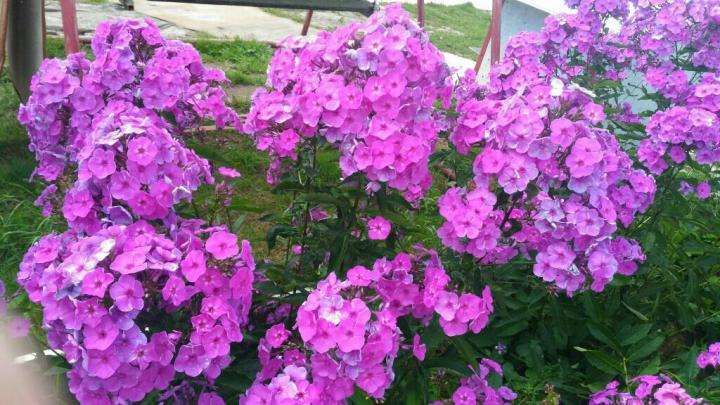

Thinning
A lot is not always good, so excess parts of the plant must be removed in a timely manner. Both leaves and full-fledged stems are subject to elimination. Thus, the bush will be better ventilated, which means it will develop better. Plus, the likelihood that some kind of infection will start in it is much less. Thinning should be carried out when the shoots have grown by 7-10 cm. It is necessary to remove the weakened, poorly developing, poorly saturated with moisture parts. They should be torn off carefully so as not to damage the root collar, otherwise it will be subject to death.
How to reproduce?
The easiest and most convenient way to reproduce phlox is by dividing the bush. This is best done in May-June or September. Even a flowering bush can be divided if necessary! After such a "surgical" procedure, it will not even stop blooming! Sadly, when planting, the flowers (but not the leaves) will have to be removed, leaving only stems 30-40 cm high.
Divide the mother bush with a sharp shovel. Then we cut off a small cut of 5-10 shoots from the rhizome and plant it in a new place. You can propagate phlox and cuttings, breaking out the shoot at the very base. The shoot must necessarily have a "heel", a place where it was attached to the mother's rhizome, with root buds. When planted in favorable soil and regularly watered, the cutting takes root well!
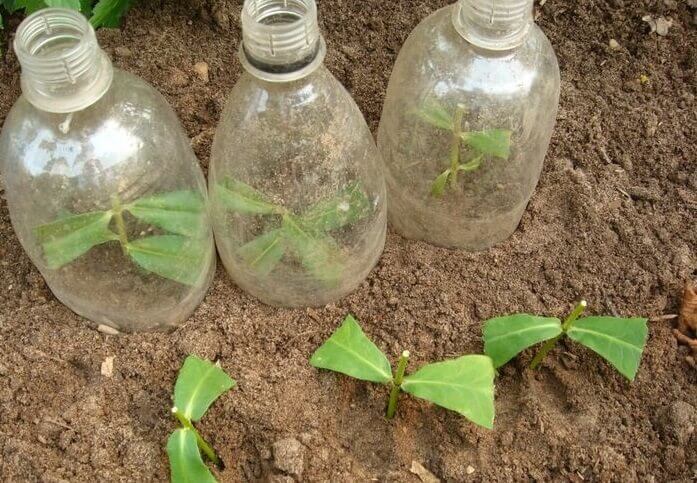

The third way of reproduction is by seeds. Actually, phloxes themselves are willingly sown. Only we often mistake their green shoots for weeds and weed them out!
We sow phlox seeds before winter. Just be sure to be fresh! In stores, you can see paniculata phlox seeds with a germination period of 2-3 years. Despite the beautiful sachets in which they are sold, they are not suitable for sowing. By February-March, phlox seeds sown in the fall before winter will almost certainly lose their germination.
So, we sow seeds in October-November, before frost. We put them a little in the soil or just throw them on top: one is enough for 2-3 weeks, anyway, with the melted snow, they go to the required depth. And in the spring, phloxes will surely delight you with cheerful green shoots!
The main methods of breeding
Plants are propagated in two ways: by dividing the bush and by cuttings. In the first case, the adult plant is completely dug up. The rhizome is cut with a sharp, clean knife to obtain a full-fledged planting material. The cut site is treated with ash, dried a little and only then planted in the chosen place. Otherwise, the root will rot or the plant will hurt.
The second way is that:
- the stem is cut from an adult healthy bush;
- cuttings are cut no more than 15–20 cm long;
- treated with a drug that promotes root formation and planted in a mixture of loamy soil and peat soil;
- regular watering is organized to keep the soil moist;
- cuttings are transplanted to a permanent place in the fall.
How to fight disease?


The biggest nuisance that happens to phlox in our gardens is powdery mildew. Usually this attack comes in the middle of summer. Phlox leaves and stems are covered with a white "felt" bloom, as if sprinkled with lime. It first appears on the lower leaves and then spreads higher. The disease progresses towards autumn, especially in rainy weather. Small spots of loose plexus of mycelium are formed on the leaves. They quickly grow in size and merge. The affected leaves gradually dry out. In the future, the disease passes to the stems and green parts of the inflorescence.
Sick plants lose their decorative effect. In the future, diseased bushes reduce frost resistance and may freeze out altogether. Therefore, we must break off all diseased leaves and immediately destroy them. To combat powdery mildew, you can use special fungicidal preparations. But first, I advise you to try a simple and affordable tool that is always at hand - wood ash.
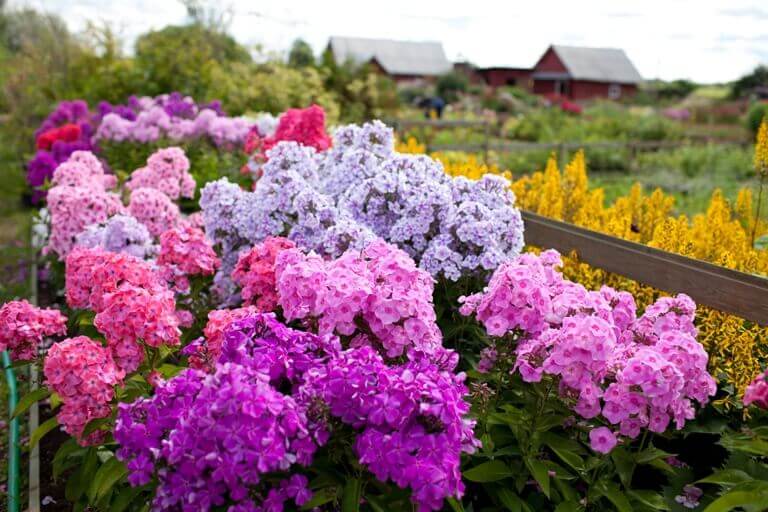

In my garden, I do this. First, I water the phlox over the leaves from a watering can or a hose. And then, while they are wet, I dust it with ash. Usually, you need to get rid of the unsightly white coating on the leaves. If the disease is too advanced, treat the bushes with the homeopathic remedy "Healthy Garden" or preparations with bacteria "Fitosporin", "Agravertin", "Iskrabio". Spray the plants thoroughly all over the bush, on the lower and upper sides of the leaves.
In the future, to increase the resistance of phlox to powdery mildew, do not thicken the planting. Weed the weeds regularly to keep the bushes well ventilated. An increase in the immunity of plants is also facilitated by feeding with a complete mineral fertilizer with microelements.
Phlox arrangement
Previously, I did not like phlox in bouquets, I preferred to admire them in the garden, but now I am convinced that if you put them in water freshly picked, they can retain their decorative effect for 4-5 days. At first I made small bouquets of them, using 1-2 inflorescences, but it turned out that large compositions with various branches - oak, pine, hawthorn - also look good. Phloxes (of any color) are very beautiful in an arrangement with openwork cut leaves and delicate smoky basil inflorescences. Elegant baskets can be obtained by combining phloxes with dahlias, clematis.

